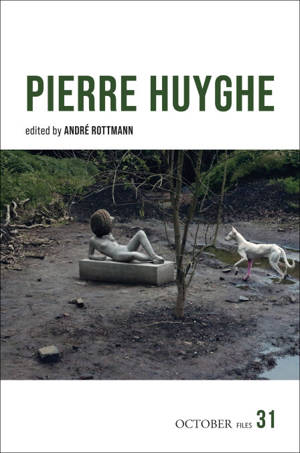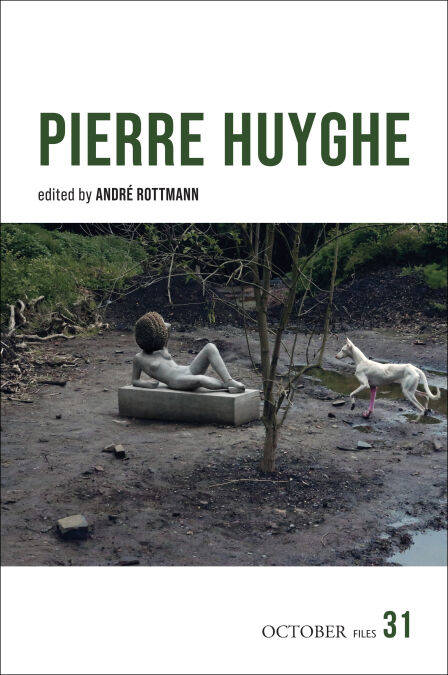
- Afhalen na 1 uur in een winkel met voorraad
- Gratis thuislevering in België vanaf € 30
- Ruim aanbod met 7 miljoen producten
- Afhalen na 1 uur in een winkel met voorraad
- Gratis thuislevering in België vanaf € 30
- Ruim aanbod met 7 miljoen producten
Zoeken
Omschrijving
The first collection of critical writings on the work of the influential contemporary French artist Pierre Huyghe.
Influenced by wide-ranging ideas from land art and institutional critique to experimental cinematic practices and narrative film, the groundbreaking work of Pierre Huyghe since the early 1990s has arguably, even indelibly, altered the landscape of contemporary art. The French artist works at the beguiling intersection of fiction and reality, representation and performance, spectacle and memory, chance and agency, living organisms and technological entities. As formats and discourses of cinema (be it Godard or Lumet) and architecture, (invented or existing) holidays and games, (puppet) theatre and opera, fairy tales and (travel) literature, museology and computer technology, life sciences and popular culture (like Manga comics or Disney movies) are renegotiated in Huyghe’s variegated projects, the methods and modalities of producing, exposing, and experiencing art, in turn, come under both critical scrutiny and allegorical speculation.
The essays and interviews by preeminent scholars, critics, and curators, including Benjamin Buchloh, David Joselit, and Molly Nesbit, compiled in this volume trace the trajectory of Huyghe’s practice over the last three decades, from the artist’s earlier engagements with the built environment, the temporalities of cinema and television, the customs of social communities, and the volatile property relations in global media culture, to his most recent and much-discussed ecological redefinitions of the objects and sites of art. At the same time these texts and conversations ponder and gauge the far-reaching implications of Huyghe’s many seminal artworks for the history, theory, and ontology of art in the early twenty-first century.
Influenced by wide-ranging ideas from land art and institutional critique to experimental cinematic practices and narrative film, the groundbreaking work of Pierre Huyghe since the early 1990s has arguably, even indelibly, altered the landscape of contemporary art. The French artist works at the beguiling intersection of fiction and reality, representation and performance, spectacle and memory, chance and agency, living organisms and technological entities. As formats and discourses of cinema (be it Godard or Lumet) and architecture, (invented or existing) holidays and games, (puppet) theatre and opera, fairy tales and (travel) literature, museology and computer technology, life sciences and popular culture (like Manga comics or Disney movies) are renegotiated in Huyghe’s variegated projects, the methods and modalities of producing, exposing, and experiencing art, in turn, come under both critical scrutiny and allegorical speculation.
The essays and interviews by preeminent scholars, critics, and curators, including Benjamin Buchloh, David Joselit, and Molly Nesbit, compiled in this volume trace the trajectory of Huyghe’s practice over the last three decades, from the artist’s earlier engagements with the built environment, the temporalities of cinema and television, the customs of social communities, and the volatile property relations in global media culture, to his most recent and much-discussed ecological redefinitions of the objects and sites of art. At the same time these texts and conversations ponder and gauge the far-reaching implications of Huyghe’s many seminal artworks for the history, theory, and ontology of art in the early twenty-first century.
Specificaties
Betrokkenen
- Auteur(s):
- Uitgeverij:
Inhoud
- Aantal bladzijden:
- 208
- Taal:
- Engels
- Reeks:
Eigenschappen
- Productcode (EAN):
- 9780262052672
- Verschijningsdatum:
- 13/04/2026
- Uitvoering:
- E-book
- Beveiligd met:
- Adobe DRM
- Formaat:
- ePub

Alleen bij Standaard Boekhandel
+ 29 punten op je klantenkaart van Standaard Boekhandel
Beoordelingen
We publiceren alleen reviews die voldoen aan de voorwaarden voor reviews. Bekijk onze voorwaarden voor reviews.








